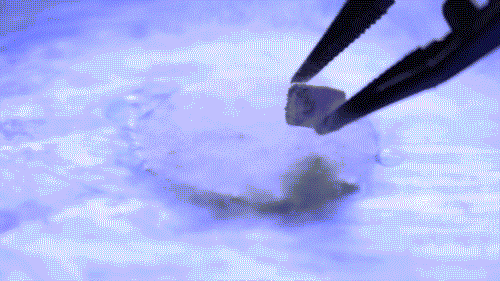
Lots of materials are conductors, meaning electricity can flow through them. However, even power lines, which have the sole job of transporting electricity, aren’t perfect. A little bit of the energy gets lost as the electricity flows. This loss of energy is called resistance. Resistance isn’t a bad thing. We use it for a lot of things. Conservation of energy tells us that energy can’t just disappear, so as the electricity dwindles it is transferred to heat. We use this to our advantage in a process called resistive heating, and it is the reason the incandescent light bulbs and electric stoves work.
However, some unusual materials have a strange property: they have zero resistance. They conduct electricity perfectly. We call these materials superconductors. So far, the only superconductors we have found require very cold temperatures. This isn’t particularly surprising as all conductors become more efficient at low temperatures. How cold though? To give some perspective, the one in the video is known as a high temperature superconductor, and it only starts working at -300 ℉! Fortunately, liquid nitrogen is about -320℉, so they work together nicely. Scientists would really like to develop room temperature superconductors, but have had no luck thus far.
Our superconductor is an unassuming small black disk. Most superconductors are some sort of metal oxide. Ours, Yttrium Barium Copper Oxide, is known as YBCO.
One strange property of superconductors is that they essentially reflect all magnetic fields. This is essentially because whenever electricity flows, it creates a magnetic field, and whenever there is a moving magnetic field, it causes electrons to move. For more about how electricity and magnetism interact, check here. By approaching a superconductor with a magnet, this causes the magnetic field to be bounced back by effectively creating an electromagnet, causing the magnet to float in the magnetic bed of the superconductor.
This process is actually even cooler than the video shows. It turns out the the magnet is not only floating, it is completely held in place above the superconductor. If the magnet is lifted, the superconductor is lifted too, and even if the superconductor is inverted, the magnet is held in its own magnetic pocket. This is unlike normal magnetic repulsion, where the magnets opposite poles only push apart. This is called quantum locking. It also allows for the very cool superconducting racetrack shown below!
This superconductor is on a magnetic track displaying quantum locking. The low temperature of the superconductor results in a very cool cloud effect. Credit: TED





